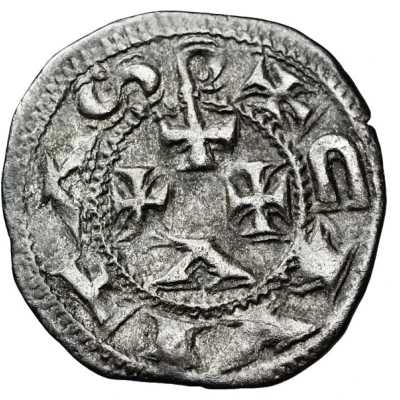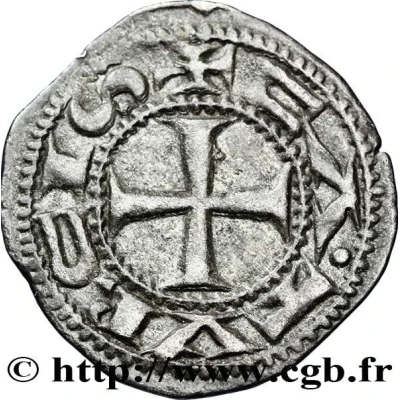


© CGB
Obol anonymous with crozier ND
| Billon | 0.47 g | 13 mm |
| Issuer | Cahors, Bishopric and City of (French States) |
|---|---|
| Type | Standard circulation coin |
| Years | 1150-1260 |
| Value | 1 Obol (1⁄480) |
| Currency | Denier |
| Composition | Billon |
| Weight | 0.47 g |
| Diameter | 13 mm |
| Shape | Round (irregular) |
| Technique | Hammered |
| Orientation | Variable alignment ↺ |
| Demonetized | Yes |
| Updated | 2024-10-04 |
| Numista | N#335039 |
|---|---|
| Rarity index | 100% |
Reverse
Cross.
Script: Latin
Lettering: ✠ CA·TVRCIഗ
Unabridged legend: Caturcis
Translation: ... of Cahors.
Comment
Cahors depended on the Count of Toulouse. Feudal coinage began in 1090 with a denarius from Géraud II de Gourdon (1068-1112), and anonymous coinage may have begun in the early 11th century.Interesting fact
One interesting fact about this coin is that it was used as a form of currency in the medieval period, specifically in the 12th and 13th centuries, in the region of Cahors, which is now part of France. The coin was made of billon, a type of alloy that consists of a mixture of silver and other metals, and it weighed approximately 0.47 grams. Despite its small size and relatively low value, this coin played an important role in the economy of the time, facilitating trade and commerce in the region.